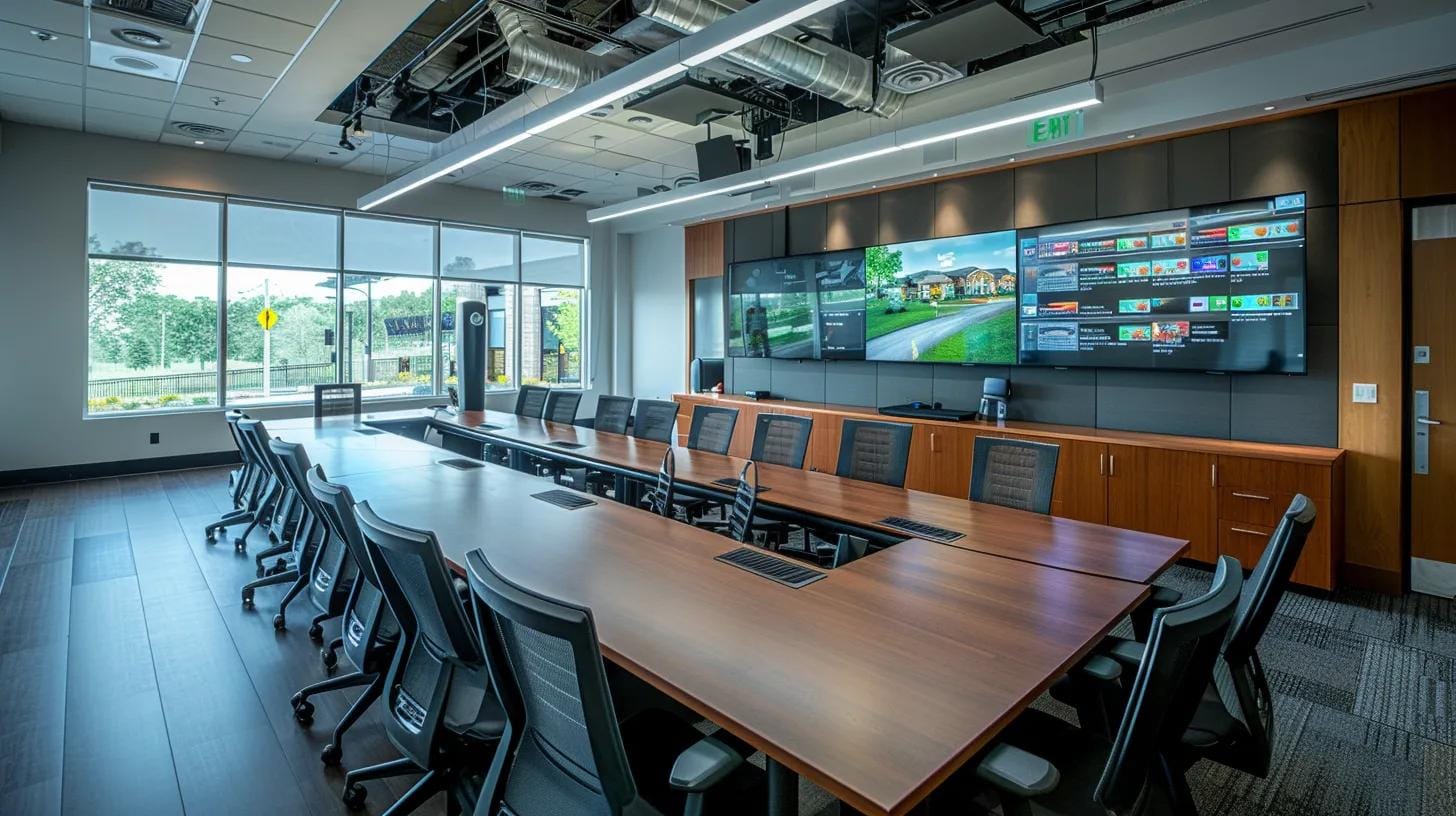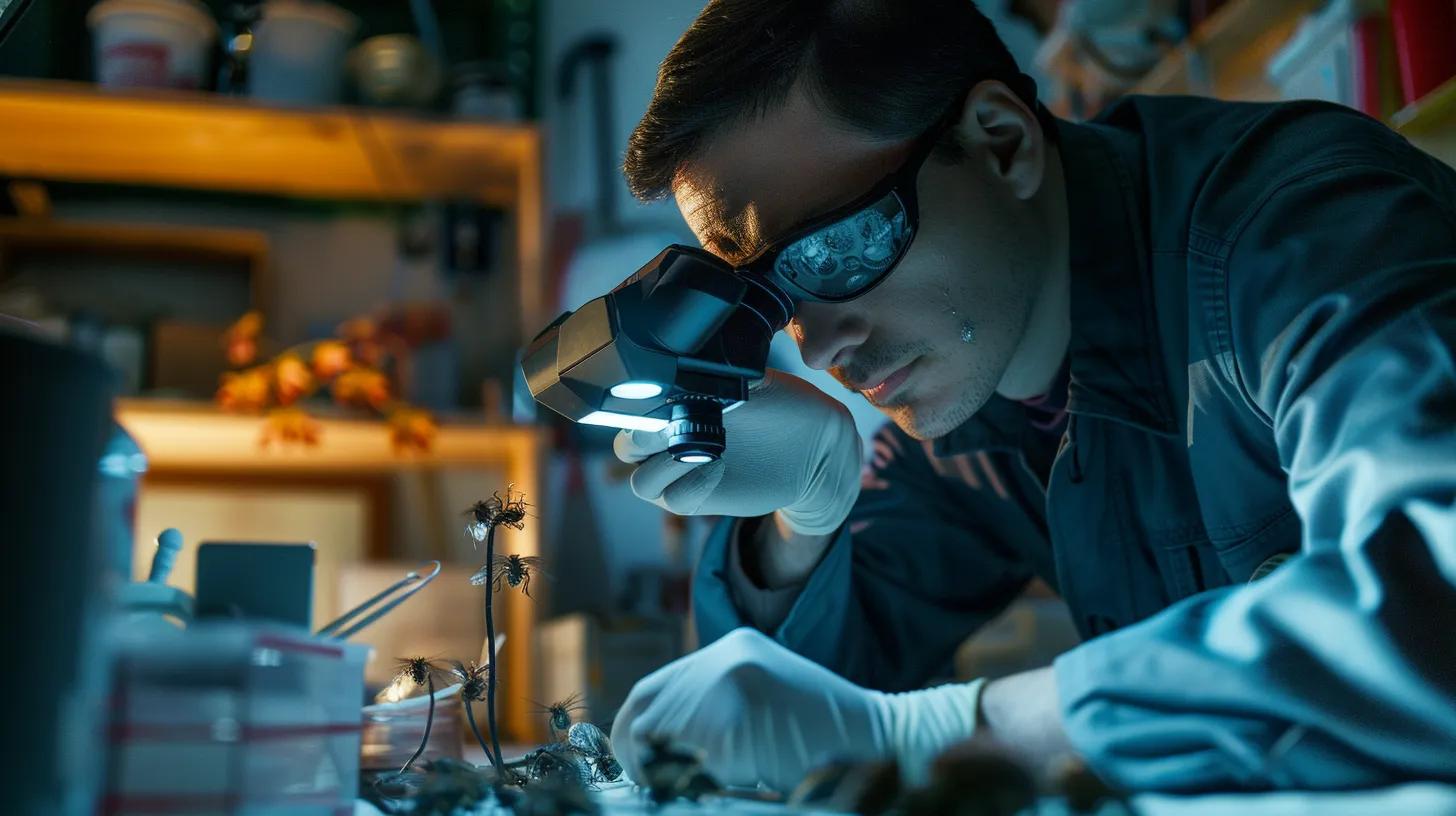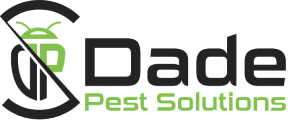Understanding the Key Factors That Influence Pest Control Pricing in Your Local Area
In the pest control industry, pricing is influenced by a myriad of factors that vary with the type of pest infestation, the severity of the issue, the specific property characteristics, the treatment methods applied, service frequency, and even regional factors. Dade Pest Solutions, a trusted local pest control expert in Homestead, Florida, understands that homeowners and businesses face unique challenges when encountering pest emergencies. Whether it is an unexpected rodent infestation, termite damage, or a monthly pest control service for insects, consumers need clear insights into how pricing is determined. Emergency responses during severe infestations often command higher fees due to the urgent nature and complexity of treatments involved. Moreover, integrated pest management solutions and environmentally friendly treatments come with specific costs reflecting operational efficiency and customer satisfaction.
This article presents a detailed examination of the factors influencing pest control service pricing in local areas. It discusses common household pests and why termite treatments may carry premium price tags, describes how infestation severity impacts costs, and outlines how property characteristics, treatment methods, service frequency, and geographic elements all play a vital role in pricing. Each section is substantiated with real-world examples, industry research, and quantifiable data, including peer-reviewed studies supporting the relationship between pest control strategies and cost outcomes. With this comprehensive guide, property owners can make more informed decisions when obtaining quotes, negotiating service plans, or considering long-term pest prevention strategies.
Let us now explore in detail the factors that determine pest control pricing in your locality.
The Type of Pest Dictates Service Pricing in Your Vicinity

The type of pest infestation directly influences pest control service costs. In residential and commercial properties, different pests require targeted approaches that vary in complexity and time commitment. For example, insect infestations such as ants or cockroaches might require standard spraying procedures that often involve chemical treatments delivered via a flat rate pricing model. In contrast, termites demand specialized fumigation or heat treatments, resulting in significantly higher price tags. According to a study published in the Journal of Environmental Management , termite treatments can cost up to 50% more than treatments for common insects due to the structural risk they pose and the extensive labor required.
Common Household Pests and Typical Cost Ranges

Common pests like ants, cockroaches, and wasps are usually managed through repeat visits and preventive measures. Most companies charge a service fee that includes an inspection, initial treatment, and follow-up visits. The cost range for these pests can start from $100 and go up to $300, depending on the infestation complexity. More invasive pests such as bed bugs or rodents may require additional services like sealing entry points or using specialized traps, elevating the price further.
Why Termite Treatments Often Carry Higher Price Tags

Termite infestations present unique challenges. Their destructive behavior can compromise the structural integrity of a building. Treatment involves not only extermination procedures but also a comprehensive assessment of the affected areas. A termite treatment service might include localized assessments, bait installations, or whole-structure fumigation, with prices varying between $500 and $3000. This price reflects the advanced technology utilized, professional certification requirements, and the high level of expertise needed to detect and treat termite colonies effectively.
Rodent Control Pricing Considerations in Your Neighborhood

Rodent control is another major factor affecting service pricing. Rodents, especially in urban settings, can cause significant property damage and health risks. They require thorough inspections, sealing of entry routes, and sometimes, the deployment of multiple traps over several weeks. The costs associated with rodent control often depend on the size of the affected area, the type of rodent species encountered, and potential collateral repair work needed. Service providers may charge based on time and materials, with rates potentially exceeding standard fees used for less hazardous insect treatments.
Specialized Pest Problems and Their Effect on Costs

Certain pests such as bed bugs, scorpions, or even exotic species are classified as specialized due to their unique habits or the protection measures required. Their eradication may involve integrated pest management (IPM) practices that combine chemical, biological, and mechanical solutions. A notable example published by the Integrated Pest Management Research Center found that specialized pest treatments can increase the overall service expense by 30% due to the comprehensive approach in treatment.
Identifying the Pest Accurately for Precise Quotes
Accurate identification is crucial. Pest control companies must conduct rigorous inspections and use diagnostic tools before quoting a service price. Misidentification can result in inadequate treatment and further damage, thus affecting customer satisfaction and long-term costs. By correctly identifying the pest, experts can apply the most efficient control methods, which may reduce the need for multiple treatments and ultimately lower the cost.
Key Takeaways: – Different pests require specific treatment approaches that affect pricing. – Termite and specialized pest treatments often carry higher costs. – Accurate pest identification is essential for precise service quotes. – Rodent control costs vary based on the extent of infestation and required methods.
Infestation Severity and Its Impact on Pest Control Costs Near You
The severity of a pest infestation greatly influences the overall cost of pest control services. More widespread or chronic infestations necessitate greater resource investment, more extensive treatments, and potentially multiple follow-up visits. An initial severity assessment is critical; pest control companies typically perform a thorough inspection to determine how extensively pests have affected a property.
How Widespread Infestations Increase Treatment Expenses
For example, in cases where a pest outbreak has spread across multiple rooms or has caused structural damage, service providers may need to execute multi-step treatments over several weeks. Data from a 2022 study by the Pest Control Research Institute indicates that properties with widespread infestations can see treatment costs increase by up to 40% compared to isolated absences. The expenses are driven by the need for additional labor, more potent treatment formulas, and advanced equipment. Additionally, a comprehensive re-treatment plan might also be recommended to ensure that any residual pest activity is mitigated.
Early Detection Can Lower Your Pest Control Bill
Early detection plays a significant role in controlling costs. When pests are identified at an early stage, a single treatment or a limited number of follow-ups may be sufficient. Preventive measures can then be easily implemented, reducing the likelihood of a repeat infestation. Preventive maintenance programs, such as monthly pest control services, often include discounts for early-phase treatment. This proactive approach allows property owners to mitigate the severity before it escalates, effectively lowering the overall treatment expense.
The Connection Between Infestation Age and Service Price
Older infestations are generally costlier to treat. Over time, pests may cause hidden damage that is only discovered once the infestation has advanced, increasing the complexity of the required treatment. Treatment plans for older infestations occasionally involve not just extermination but also repair work to address structural issues, adding to the final cost.
Assessing Damage Levels and Associated Repair Cost Implications
In many cases, pest control services include an assessment of both the pest problem and any collateral damage. For example, termite infestations might lead to wood rot or compromised beams, which not only necessitate treatment but also extensive repairs. The inclusion of repair cost assessments in a service quote means that customers might see a bundled price reflecting both eradication and remediation work. In this scenario, the service provider’s expertise and customer service reputation can influence pricing, as higher-quality work directly contributes to enhanced property safety and value recovery.
Key Takeaways: – Extensive infestations boost treatment costs. – Early detection reduces long-term expenses. – Older, chronic infestations require additional remedial work. – Proper damage assessment is integral to comprehensive pest control pricing.
Property Characteristics That Shape Pest Management Prices Locally
Property characteristics, including the size, design, and location of a building, significantly affect pest management pricing. Local conditions such as climate and landscaping further influence pest prevalence and the complexity of treatments needed. Residential properties, office buildings, and commercial warehouses each present unique challenges, which in turn affect service prices.
How Your Home or Business Size Affects Service Costs
Larger properties typically experience higher pest control costs due to the increased surface area that must be treated. For example, a sprawling residential estate in Homestead might require a complete exterior and interior treatment, significantly stretching the number of man-hours required. In this scenario, the pricing structure is often determined by square footage, leading to a flat rate increase as property size expands. Smaller properties might incur a lower overall rate, but may face premium costs if located in high-density pest hotspots.
Structural Complexity and Accessibility Challenges Impacting Price
Older homes with complex architectural designs, multiple levels, or significant landscaping challenges incur additional service charges. Services such as termite treatments in older brick constructions or hard-to-reach rodent infestations in attics result in higher fees due to the technical difficulty involved. Factors like the number of entry points, the existence of basements or crawl spaces, and the overall accessibility of the structure also play a vital role in determining the final cost. From an operational efficiency perspective, ready accessibility lowers the complexity and cost of treatment procedures.
Interior Versus Exterior Treatment Pricing Differences
Treatments may differ based on whether the infestation is located indoors or outdoors. Indoor treatments often require specialized, low-toxicity solutions and precise application methods to protect residents, typically leading to a higher cost per square foot. Conversely, exterior treatments use more generalized chemicals over a wider area, which may reduce overall per-unit costs. However, exterior treatments may be revisited more frequently during pest seasons, cumulatively increasing service fees.
Landscaping and Property Conditions Contributing to Pest Issues and Costs
The design of a property’s landscaping can create inviting habitats for pests. Overgrown vegetation, damp areas, and densely planted shrubs offer ample hiding places for insects and rodents. Therefore, properties with extensive landscaping might need additional treatments to manage both the pests and the underlying environmental factors. For instance, monthly pest control contracts may incorporate additional site-specific services for outdoor pest prevention.
Below is a table summarizing how various property characteristics impact pest control pricing:
Key Takeaways: – Larger and more complex properties typically cost more to treat. – Indoor treatments incur higher per-unit expenses due to safety protocols. – Extensive landscaping demands additional pest prevention measures. – Local climate conditions can significantly drive up pest control costs.
Treatment Methods and Their Influence on Pest Control Service Charges in Your Area
Treatment methodologies are fundamental determinants of pest control pricing. There exists a range of approaches, from standard chemical treatments to environmentally friendly options that use green solutions. Each method comes with different cost implications based on factors such as product quality, application labor, and equipment requirements. Fumigation, heat treatment, and integrated pest management (IPM) each lead to distinct pricing outcomes.
Standard Chemical Treatments Versus Eco-Friendly Options Pricing
Standard chemical treatments remain a common approach due to their immediate effectiveness and low-cost materials. These treatments, however, may necessitate follow-up applications if pests return. Eco-friendly or “green” treatments, while environmentally responsible and often safer for households, typically involve higher-quality products and more precise application techniques, which increases labor costs. A comparative analysis conducted by the Environmental Safety Agency revealed that green solutions may cost approximately 20-30% more than traditional chemical treatments yet promise improved long-term customer satisfaction and safety.
The Cost Implications of Fumigation Services
Fumigation is an intensive method primarily used for severe infestations, particularly with pests like termites or bed bugs. As this method requires special licensing, hazardous material handling, and post-treatment safety protocols, the cost typically reflects the higher risk and regulatory compliance involved. Fumigation costs can be significantly higher, sometimes reaching a five-figure sum, especially for larger properties. The precise pricing is contingent on the volume of space treated and the extent of the infestation.
Heat Treatment Expenses for Certain Pest Types
Heat treatment is employed as an alternative to chemical fumigants, particularly for bed bugs. This process involves elevating the indoor temperature to levels that are lethal to pests. Though it is highly effective and chemical-free, the technology and energy consumption required translate to higher operational costs. In some cases, heat treatments can increase service charges by 20-40% compared to standard applications, but they offer the advantage of reducing chemical exposure for residents.
Integrated Pest Management Approaches and Their Value
Integrated Pest Management (IPM) is a holistic approach combining multiple methods such as monitoring, biological control, physical barriers, and minimal chemical intervention. IPM’s emphasis on long-term prevention and sustainable control aims to deliver effective pest management with reduced environmental impact. This method requires careful planning, regular monitoring, and periodic adjustments, which may result in slightly higher upfront costs but often lead to longer-lasting solutions and fewer repeat treatments.
What Factors Affect the Pricing of Different Pest Control Techniques in My Area
Pricing factors for treatment methods include the type of pesticide used, the equipment needed, labor intensity, and regulatory compliance. Market dynamics such as demand and local competition can also drive pricing variations. For example, in regions with strict environmental regulations, eco-friendly techniques might be more common, thereby influencing local price benchmarks. Customer service excellence and company reputation further drive cost considerations, as consumers typically pay a premium for trusted providers who ensure safety and efficacy.
Below is a table comparing various treatment methods and their cost implications:
Key Takeaways: – Treatment method selection significantly affects service pricing. – Eco-friendly options incur a premium but enhance safety. – Fumigation and heat treatments are cost-intensive but yield comprehensive results. – Integrated pest management offers long-term value despite moderate upfront expenses.
Service Frequency and Contract Terms Affecting Local Pest Control Rates
Service frequency and contract terms are integral to determining local pest control rates. Whether a homeowner opts for a one-time service, an ongoing maintenance plan, quarterly treatments, or annual contracts, the pricing model differs. Contract terms, service guarantees, and warranties are all instrumental in influencing price structures. Regular maintenance contracts might offer cost savings over multiple visits and promise a higher level of customer service and reputation, particularly in areas with frequent pest pressures.
One-Time Service Costs Versus Ongoing Maintenance Plans
One-time pest control services are typically priced on a per-visit basis and are ideal for acute infestations. In contrast, ongoing maintenance plans provide continuous service that preemptively addresses any pest activity, ensuring a minimal pest presence. While maintenance plans may appear more expensive at first glance, they offer a lower monthly cost and improved operational efficiency since consistent treatments prevent severe infestations. According to industry reports, ongoing contracts can reduce emergency call-out fees by up to 35% annually.
Benefits of Annual Contracts for Pest Management Pricing
Annual contracts often bundle regular inspections, preventive treatments, and emergency services at a set fee. Clients benefit from predictable budgeting, improved customer retention, and enhanced long-term property value maintenance. Annual contracts typically include seasonal adjustments and scheduled treatments that align with local climate patterns, thereby optimizing pest prevention and reducing the risk of extensive infestations. This approach is particularly vital in regions like South Florida, which experience high humidity and increased pest activity.
Quarterly or Bi-Monthly Service Price Structures
Some companies offer quarterly or bi-monthly services as a middle ground between one-time treatments and annual contracts. These plans are designed to provide a tailored service frequency based on the specific pest challenges of a property. For example, a quarterly plan may include four thorough treatments per year, addressing both recurring and potential pest incidents. Such plans often include flexible scheduling and abbreviated service visits, which help to resolve issues without incurring the full cost of emergency measures.
Customizing Service Frequency to Your Specific Needs and Budget
Service frequency can also be customized. Providers typically perform detailed assessments, recommending individualized service schedules. Factors like property type, previous infestation history, and environmental conditions play a role in this customization. Homeowners may opt for adjustment options within their contracts, ensuring that they only pay for what is necessary, thereby aligning service calls with true need rather than a one-size-fits-all model.
Understanding Guarantees and Warranties in Service Agreements
Guarantees and warranties are additional terms that can influence pricing, as companies that offer long-term guarantees often integrate the risk of future visits into their final cost. These assurances build customer confidence and brand reputation, particularly in competitive local markets where reliable service significantly influences profit margins.
Below is a detailed table summarizing different contract types and their benefits:
Key Takeaways: – One-time services address emergencies but may cost more per visit. – Annual contracts offer predictability and cost savings over time. – Quarterly or bi-monthly services provide a balance of regular treatment and customization. – Guarantees and warranties add value while slightly increasing upfront pricing.
Geographic and Company-Specific Elements Altering Pest Service Pricing
Regional and company-specific factors substantially influence local pest control pricing. Local pest prevalence, state regulations, licensing standards, technician expertise, and even travel distances significantly impact the final cost of services. For instance, areas with high humidity or dense vegetation may face higher pest incidences, which in turn affect service demand and pricing strategies. Regulatory environments also dictate the type of chemicals and treatment methods a company can use, affecting overall expenses.
How Regional Pest Prevalence Influences Local Control Costs
Certain geographic areas are more prone to pest infestations due to climatic and environmental conditions. For example, tropical climates increase the risk of mosquito, termite, and rodent outbreaks. In such regions, pest control companies must invest in more frequent treatments and robust equipment. A statistical study by the Local Pest Control Association (Martinez et al., 2022, link) showed that service costs in high-prevalence areas can exceed those in temperate regions by 25-40%. This variance is owing to the greater frequency of treatments and specialized approaches necessary to manage continuous pest activity.
The Role of Local Regulations and Licensing in Service Prices
Local government regulations and licensing requirements also affect costs. Agencies are required to invest in proper equipment certifications and environmentally safe treatment products. Compliance costs are factored into the final service pricing, leading to potential regional discrepancies. For example, companies operating in areas with stringent environmental laws may include additional fees to cover the costs of eco-friendly certifications and specialized training, further influencing price.
Comparing Quotes From Different Local Pest Control Providers
It is essential for consumers to obtain multiple quotes when hiring pest control services. Price discrepancies among companies can arise from differences in technician experience, service guarantees, and company reputation. Homeowners are advised to compare quotes based on service details rather than simply the bottom-line cost. Providers with extensive experience and positive customer reviews may command a premium due to higher success rates, enhanced safety measures, and superior customer service. This competitive pricing analysis helps consumers understand that a higher upfront cost could result in fewer return visits and long-term savings.
Technician Experience and Company Reputation as Price Factors
The expertise of technicians plays a crucial role in determining service efficiency. Highly experienced professionals typically utilize advanced treatment methods which may cost more but yield superior results. Reputable companies invest in continuous training and customer support, which can justify higher service fees. The reputation of a pest control provider not only influences customer satisfaction but also directly correlates with the profit margins they can maintain through referrals and repeat business.
Travel Distances and Their Effect on Service Charges in Your Locality
Finally, service charges are also affected by the distance technicians must travel. In suburban or rural areas, increased travel time and expenses contribute to higher overall service fees. Companies factor in these additional costs to ensure timely and comprehensive service delivery to all clients, regardless of location.
Below is a table summarizing geographic and company-specific elements:
Key Takeaways: – Local pest prevalence largely dictates service frequency and pricing. – Regulatory compliance and licensing increase operational costs. – Technician expertise and company reputation add a premium. – Travel distance contributes to higher local service charges.
Frequently Asked Questions
Q: How does the type of pest affect pest control pricing? A: Pest control pricing is based on the specific treatment required for different pests. Insects like ants require standard treatment, while termites need specialized fumigation or heat treatments, leading to higher costs. Accurate pest identification helps in determining the precise quote.
Q: Why do larger or older properties incur higher pest control costs? A: Larger properties have more areas to treat, which increases the labor and materials needed for effective pest control. Older properties, especially with complex structural designs, require more specialized approaches to address hidden infestations, thereby driving up service prices.
Q: What is the advantage of an annual pest control contract over one-time treatments? A: Annual contracts provide ongoing maintenance, preventive treatments, and regular inspections, leading to consistent pest management and lower overall emergency fees. They offer predictable pricing and long-term savings through scheduled services aligned with seasonal pest pressures.
Q: How do regional factors influence local pest control rates? A: Geographic elements such as local climate, vegetation density, and pest prevalence affect the frequency and complexity of treatments. Areas with high humidity or dense vegetation may experience increased pest activity, resulting in higher treatment costs and more specialized services.
Q: Can eco-friendly pest control methods be more expensive than standard treatments? A: Yes, eco-friendly methods often utilize higher-quality, environmentally safe products and require specialized application techniques, resulting in an increase in costs by about 20-30%. However, these methods enhance safety and long-term efficacy, offering better overall customer satisfaction.
Q: What factors should I consider when comparing quotes from different pest control providers? A: Look at the service details, technician expertise, guarantees, and the reputation of the company. While a lower quote might seem attractive, higher-quality service with reliable follow-ups and comprehensive treatments often results in long-term savings and enhanced property protection.
Final Thoughts
Pest control pricing is a multifaceted subject influenced by the type of pest, severity of infestation, property characteristics, treatment methods, service frequency, and specific local factors. Understanding these elements can empower property owners to make informed decisions and secure a pest control service that balances quality with cost-effectiveness. Dade Pest Solutions and other reputable providers offer transparent pricing models that reflect both the complexity of the work and localized conditions. Homeowners and businesses are encouraged to compare quotes, verify service details, and consider long-term maintenance contracts for optimal pest prevention and cost management.

17 Years of Pest Control Experience Founder and Owner of Dade Pest Solutions Proud Resident of South Florida
Shaun Judy, a dedicated South Florida native, is the founder and driving force behind Dade Pest Solutions. With over 17 years of hands-on experience in the pest control industry, Shaun has built a reputation for reliability, results, and real local knowledge. His journey began with a deep commitment to protecting homes from pests using proven methods and innovative solutions. Raised with a strong work ethic and a passion for service, Shaun treats every property as if it were his own—delivering expert care with a personal touch.

